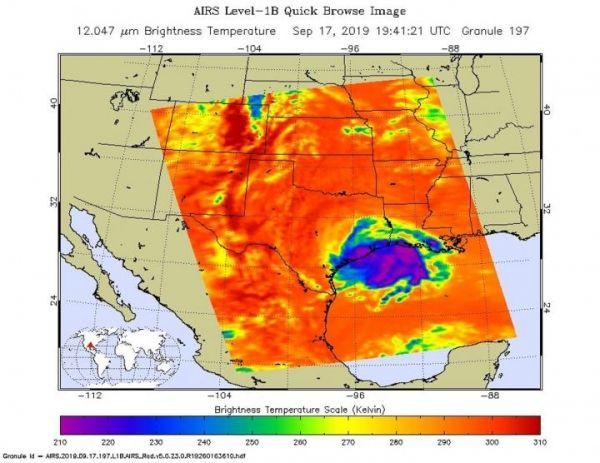One of the ways NASA researches tropical cyclones is using infrared data that provides temperature information. The AIRS instrument aboard NASA’s Aqua satellite captured a look at those temperatures in Tropical Depression Imelda and gave insight into the storm’s rainfall potential over eastern Texas.
Cloud top temperatures provide information to forecasters about where the strongest storms are located within a tropical cyclone. Tropical cyclones do not always have uniform strength, and some sides are stronger than others. The stronger the storms, the higher they extend into the troposphere, and the colder the cloud temperatures in those storms.
NASA provides data to forecasters at NOAA’s National Hurricane Center or NHC so they can incorporate it in their forecasting.
On Sept. 17 at 3:41 p.m. EDT (1541 UTC) NASA’s Aqua satellite analyzed the storm using the Atmospheric Infrared Sounder or AIRS instrument. AIRS found coldest cloud top temperatures as cold as or colder than minus 63 degrees Fahrenheit (minus 53 degrees Celsius) north and east of Imelda’s center. NASA research has shown that cloud top temperatures that cold indicate strong storms that have the capability to create heavy rain. Some of the heaviest rain at the time of the image was over the Texas coastline.
Read more at NASA/Goddard Space Flight Center
Image: On Sept. 17 at 3:41 p.m. EDT (1541 UTC) NASA's Aqua satellite analyzed the storm using the Atmospheric Infrared Sounder or AIRS instrument. AIRS found coldest cloud top temperatures as cold as or colder than (purple) minus 63 degrees Fahrenheit (minus 53 degrees Celsius) north and east of Imelda's center. (Credit: NASA JPL/Heidar Thrastarson)


